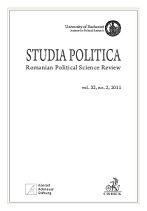Arheologie electorală. Particularităţi istorico-electorale în România şi Dobrogea interbelică (1919-1937)
Electoral Archaeology. Electoral History Features in Interwar Romania and Dobrudja Period [1919-1937
Author(s): Aurelian GiugălSubject(s): Politics / Political Sciences
Published by: Editura Universităţii din Bucureşti
Keywords: Electoral system; interwar Romania; elections; electoral comparison; Dobrudja
Summary/Abstract: In the interwar Romanian democracy, the main actor in this political mechanism around which the electoral system and the political parties were rounding was the King. He was designating a party in order to form the government, and afterwards the elections organized by the cabinet were inevitably won by the political party in power. As no party was designated one after another to rule the government, the sequence in power was simply and efficiently ensured. Winning the elections for each party in power was closed related to the voters dedicated to the government, meaning those who were giving their votes to the leading power. And this way, the interwar electoral puzzle was completed. The cohort of voters willing to vote for the government was influenced by many indicators such as cultural (literate) and economic ones, so that the electoral behavior differences between regions like Oltenia and Banat were significant, taking into consideration the economic gaps. Therefore, the electoral comparison between Romania and Dobrudja in the interwar period makes sense.
Journal: Studia Politica. Romanian Political Science Review
- Issue Year: 11/2011
- Issue No: 2
- Page Range: 255-273
- Page Count: 19
- Language: Romanian

